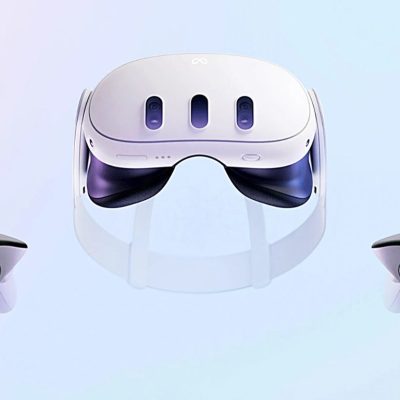When you use a Meta Quest (formerly Oculus Quest), everything happens inside the headset. Casting lets you share that view on another screen so others can watch in real time.
You can cast your VR view to:
- A TV (or any screen with Chromecast/Google Cast support)
- A phone or tablet using the Meta Quest app
- A computer using the browser page oculus.com/casting
This is helpful when:
- Friends and family want to watch you play
- You’re showing VR in a classroom, office, or demo
- Parents want to supervise what kids are doing in VR
- You want to record or live stream your VR gameplay from a PC
Before You Start: Things You Must Check
Make sure these basics are done first. Most casting problems come from these points:
- Same Wi-Fi for everything
- Headset, phone, TV/Chromecast, and computer must all be on the same Wi-Fi network.
- Avoid guest networks or “isolated” Wi-Fi where devices can’t see each other.
- Good, stable Wi-Fi
- Casting is live video, so it needs a solid connection.
- Use 5 GHz Wi-Fi if possible (better than 2.4 GHz for streaming).
- Same Meta account
- Log in with the same Meta account on:
- Your Quest headset
- The Meta Quest mobile app
- The oculus.com/casting page (for PC casting)
- Note: Only the primary account on the headset can cast to the mobile app. Secondary accounts can cast to PC/Chromecast but not to the phone app.
- Log in with the same Meta account on:
- Everything is turned on and updated
- Headset powered on and awake
- Phone / TV / PC turned on
- Meta Quest app updated
- Headset software updated if possible
- Supported browser for PC
- For computers, casting works in Google Chrome and Microsoft Edge.
- Firefox and some other browsers won’t work with oculus.com/casting.
Once these are ready, you can start casting to any supported device.
Option 1: Cast Meta Quest to a TV
Casting to a TV is great when you want everyone in the room to watch.
What you need
- A Meta Quest headset (Quest, Quest 2, Quest 3, Quest Pro, etc.)
- A TV that supports Google Cast / Chromecast, either:
- Built-in (many smart TVs), or
- Through a Chromecast or other Google Cast device connected via HDMI
- TV and headset on the same Wi-Fi network
Important: Meta says Chromecast is not fully supported, so it may be a bit unstable on some TVs. If it’s glitchy, casting to a phone or computer is usually more reliable.
Steps: Cast from the headset to your TV
- Turn on your TV
- If you use a separate Chromecast, select the HDMI input where it’s connected.
- Make sure the Chromecast/TV is online and on the same Wi-Fi.
- Put on your Quest headset
- Open the universal menu
- Press the flat Meta/Oculus button on your right controller.
- Open the Camera / Cast option
- In the menu, look for Camera or Share.
- Select Cast.
- Choose your TV
- A list of available devices will appear: phones, Chromecast devices, PCs (if oculus.com/casting is open), etc.
- Select your TV or Chromecast from the list.
- Start casting
- Click Next / Start.
- You’ll see a message in VR that casting has started.
- After a few seconds, your TV should show what you see in VR.
- When you’re done
- Open Camera → Cast again in the headset.
- Select Stop Casting.
If your TV doesn’t show up:
- Make sure it’s on the same Wi-Fi and not in “guest mode”.
- Try restarting the TV / Chromecast.
- If it still doesn’t appear, try casting to your phone or computer instead, then mirror that to the TV as a workaround.
Option 2: Cast Meta Quest to Your Phone (Meta Quest App)
Casting to your phone is often the easiest and most reliable method. It’s also perfect when there’s no TV nearby.
What you need
- The Meta Quest app installed on your phone
- Phone and headset on the same Wi-Fi
- Logged into the same Meta account on both
- Phone screen set to stay awake (or a long timeout), so it doesn’t lock during casting
Steps: Cast to your phone
- Open the Meta Quest app on your phone
- Tap Menu → Casting
- Look for the Casting option in the app.
- Select your headset
- You’ll see a list of available headsets.
- If you don’t see yours, tap Other Devices so the app can scan the network.
- Choose This Phone as the target
- When asked where to cast, pick your phone.
- Tap Start
- After a brief delay, the VR view appears on your phone screen.
- Rotate the phone sideways to get a bigger view.
- To stop casting
- Tap Stop Casting in the Meta Quest app.
Note: If you close the Meta Quest app, open another app, or your phone screen locks, casting stops immediately. Keep the app open and the screen awake during the session.
Workaround for unsupported TVs
If your TV doesn’t support casting directly from the Quest:
- Cast to your phone using the steps above.
- Use your phone’s screen mirroring (like AirPlay, Smart View, or Cast screen) to mirror the phone to the TV.
Be aware that this is two wireless hops (headset → phone → TV), so you may see more lag.
Option 3: Cast Meta Quest to a Computer (Oculus.com/Casting)
Casting to a computer is ideal when:
- You want to show VR on a bigger monitor
- You want to record the screen or share it on Zoom / Teams / OBS
- TV casting is unreliable
What you need
- A PC or Mac connected to the same Wi-Fi as the headset
- Google Chrome or Microsoft Edge browser
- Your Meta account login details
Steps: Cast to your computer
- On your computer, open Chrome or Edge
- Go to oculus.com/casting
- Log in with your Meta account
- Use the same account as on the Quest.
- You’ll see a page waiting for your headset to start casting.
- Put on your Quest headset
- Open the universal menu (Meta/Oculus button)
- Go to Camera → Cast
- Select Computer as the cast target
- Then click Next / Start in the headset.
- Watch the browser
- After a few seconds, your VR view appears on the oculus.com/casting page.
- Enable sound (if needed)
- Sometimes the stream starts muted in the browser.
- Look for a speaker icon on the video and click to unmute.
- Optional: Go fullscreen
- Click the fullscreen icon on the video player
- Or press F11 to make the browser fullscreen.
- To stop casting
- In the headset: Camera → Cast → Stop Casting, or
- Close the browser tab.
Extra trick: PC → TV relay
If direct TV casting is unstable:
- Cast Quest → PC (as above).
- In Chrome, use the built-in Cast feature to cast that browser tab to a Chromecast TV.
This adds one more hop (Quest → PC → TV), but some people find it more stable than casting directly to Chromecast.
Common Problems and Quick Fixes
1. “I can’t see my device” / Headset not found
Check:
- Same Wi-Fi on all devices
- Logged into the same Meta account
- For phone casting, you must use the primary account on the headset
- Headset is awake and not in sleep mode
If it still doesn’t work:
- Restart the headset
- Restart the phone / PC / TV
- Toggle Wi-Fi off and on again
2. Cast keeps disconnecting or is very laggy
Likely a Wi-Fi issue:
- Use a 5 GHz network if possible
- Move closer to the router
- Pause other heavy usage (4K streams, large downloads, etc.)
- Restart your router if it’s been running for a long time
If Chromecast is unstable, switch to:
- Casting to phone or
- Casting to PC via oculus.com/casting
3. No sound on TV / phone / computer
- On phone: turn up the volume, make sure it’s not muted.
- On PC:
- Unmute the video on the oculus.com/casting page
- Check computer volume and output device
- On TV:
- Make sure TV volume is up and not muted
Remember: some browsers mute auto-playing video by default. Always check that small speaker icon on the player.
4. Casting stops when I lock my phone or switch apps
That’s normal behavior. Casting to the phone:
- Stops if you:
- Close the Meta Quest app
- Switch to another app
- Lock your screen
To avoid this:
- Keep the Meta Quest app open
- Temporarily set screen timeout to “long” or “never” while you cast
5. Performance or battery issues
Casting uses extra processing and network bandwidth, so:
- Your Quest battery will drain faster
- You may see more lag or small glitches, especially in heavy games
- If you also record video on the headset while casting, it can get choppy
To improve this:
- Start with a full charge or use a battery pack
- Avoid recording on the headset while casting – instead, record the cast on the PC using screen capture
- Take breaks if the headset feels hot
6. Network or security blocks
On some networks (offices, schools, hotels, mesh systems):
- Device-to-device traffic (like casting) may be blocked
- Even if Wi-Fi works for internet, devices might not “see” each other
If nothing works in these environments:
- Try a different network
- Use your own router or a personal hotspot (if allowed)
Simple Tips for Smooth Casting
- Use 5 GHz Wi-Fi whenever you can
- Keep the headset and casting device near the router
- Keep all devices charged
- Update:
- Quest headset software
- Meta Quest mobile app
- Your phone / PC OS when possible
- For important demos (class, meeting, party), test casting first so you’re not fixing issues in front of people
- Stop casting when you’re done to:
- Save battery
- Free up Wi-Fi
- Protect your privacy
Once you’ve set it up a couple of times, casting becomes very quick: Headset on → Camera → Cast → choose device → Start.
After that, everyone around you can enjoy the VR experience along with you, whether they’re watching on a TV, a phone, or a computer screen.





